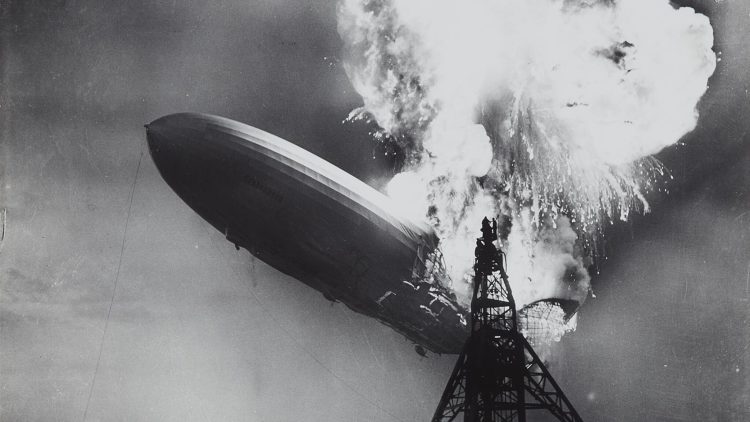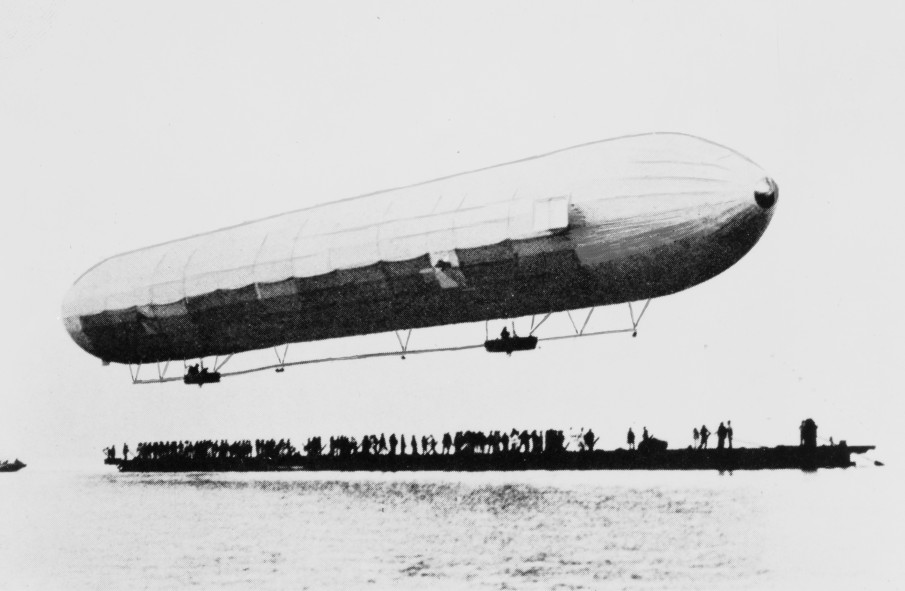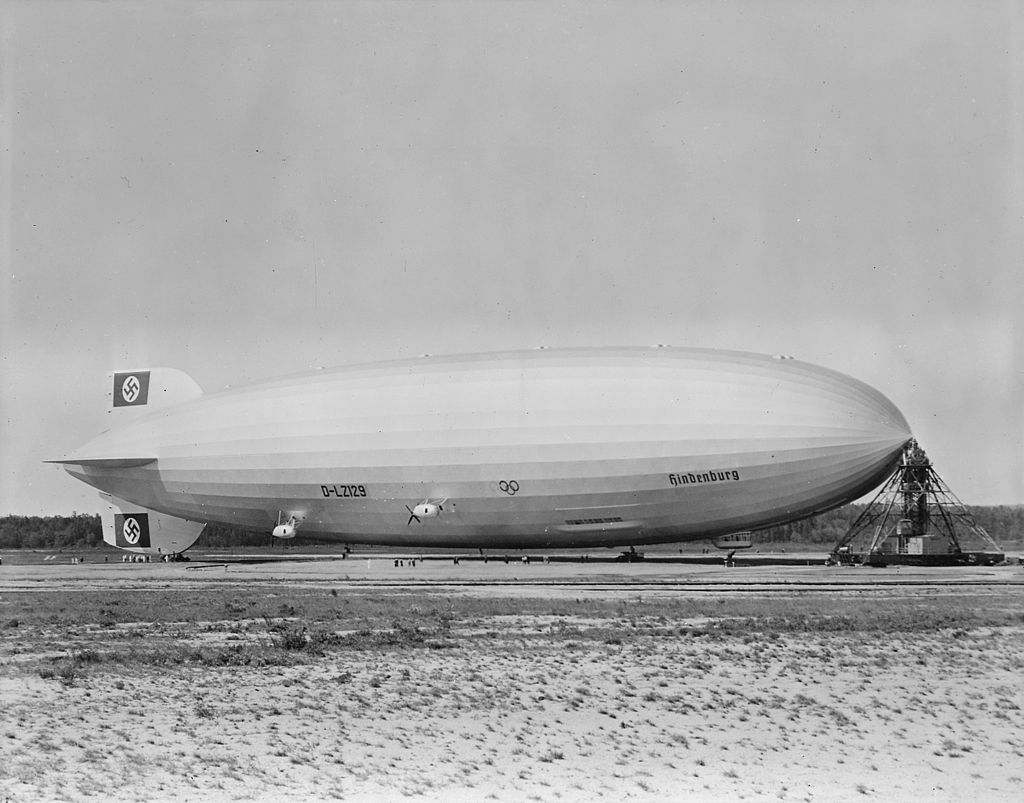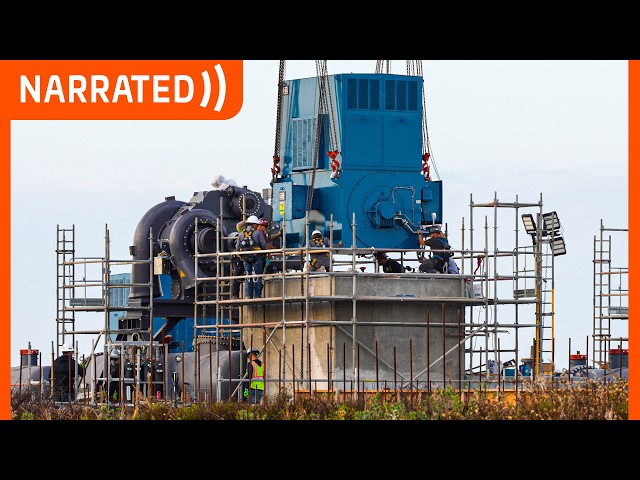Tragedy in the Skies
On the evening of May 6, 1937, the world watched in horror as the Hindenburg, a marvel of aviation engineering, met a fiery end in Lakehurst, New Jersey. What was meant to be a routine landing turned into one of the most infamous disasters in history, claiming the lives of 36 passengers and crew members and casting a shadow over the future of airship travel.
Lakehurst Naval Air Station, nestled in the tranquil countryside of New Jersey, was the scene of the unfolding tragedy. As the Hindenburg approached its mooring mast, a routine procedure for docking, disaster struck. In a matter of seconds, the airship erupted into flames, engulfing the hydrogen-filled envelope in a roaring inferno that lit up the night sky.
The question on everyone’s lips was: why did it happen? To this day, the exact cause of the Hindenburg disaster remains a subject of debate among historians, engineers, and aviation enthusiasts. While the most widely accepted theory points to a combination of factors, including a static discharge igniting the highly flammable hydrogen gas, other explanations have been proposed.
Conspiracy theories abound, with some suggesting sabotage or foul play as the true cause of the disaster. These theories point to various pieces of evidence, such as eyewitness accounts of suspicious individuals near the airship before the incident, as well as rumors of political motives behind the alleged sabotage. However, the lack of concrete evidence to support these claims has led many to dismiss them as unfounded speculation. Here we list the most famous conspiracies:
- Sabotage by Enemy Agents: This theory suggests that the Hindenburg was deliberately sabotaged by enemy agents seeking to undermine German airship technology or provoke anti-German sentiment. Proponents of this theory point to alleged sightings of suspicious individuals near the airship before the disaster and the political tensions of the time as possible motives.
Plausibility: While the possibility of sabotage cannot be entirely ruled out, there is a lack of concrete evidence to support this theory. Investigations conducted after the disaster found no conclusive proof of sabotage, and eyewitness testimonies regarding suspicious individuals were inconsistent. Furthermore, the Hindenburg disaster occurred during a period of heightened international tensions, making it difficult to pinpoint a specific motive or culprit.
- Electrostatic Discharge: This theory posits that the Hindenburg was brought down by an electrostatic discharge, possibly triggered by atmospheric conditions or the airship’s own electrical systems. Proponents of this theory argue that the highly flammable hydrogen gas used to lift the airship could have been ignited by a static spark, leading to the catastrophic fire.
Plausibility: Electrostatic discharge remains one of the leading theories regarding the cause of the Hindenburg disaster. Experimental evidence and computer simulations have demonstrated that under certain conditions, static electricity buildup could indeed ignite a flammable gas like hydrogen. However, the exact sequence of events leading to the discharge and subsequent fire remains a subject of debate among experts.
- Structural Failure: Some conspiracy theories suggest that the Hindenburg’s structural integrity was compromised before the disaster, either due to design flaws, manufacturing defects, or sabotage. Proponents of this theory point to inconsistencies in eyewitness testimonies and photographs taken before the fire, which they interpret as evidence of structural damage prior to the accident.
Plausibility: While it is true that the Hindenburg’s design and construction underwent rigorous scrutiny after the disaster, investigations concluded that there were no significant structural defects or failures that could have directly caused the fire. The airship’s rigid framework, composed of lightweight materials and reinforced with steel cables, was considered state-of-the-art for its time and had undergone extensive testing prior to its maiden flight.
The Hindenburg disaster dealt a severe blow to the reputation of airship travel and led to a decline in passenger airship operations, it did not bring about the complete cessation of airship development or use.
Following the disaster, public confidence in hydrogen-filled airships was greatly shaken. As a result, many airship operators transitioned to using helium, a non-flammable gas, as a lifting medium. Helium, although safer than hydrogen, was more expensive and less readily available, which added to the operational costs of airship travel.
Despite these challenges, airships continued to be utilized for various purposes after the Hindenburg disaster. Military forces around the world maintained fleets of airships for reconnaissance, patrol, and anti-submarine warfare during World War II. These airships offered advantages such as long endurance, low operating costs, and the ability to operate in adverse weather conditions.
Furthermore, airships found niche applications in civilian sectors such as advertising, aerial photography, scientific research, and tourism. Modern airship designs incorporated advancements in materials, propulsion systems, and safety features to improve performance and reliability.
In recent years, there has been renewed interest in airships for certain specialized roles, such as cargo transport to remote areas, surveillance and monitoring of natural resources, and tourism ventures offering scenic flights. Companies and research institutions continue to explore innovative uses for airships, leveraging advancements in technology and materials to overcome past limitations.











